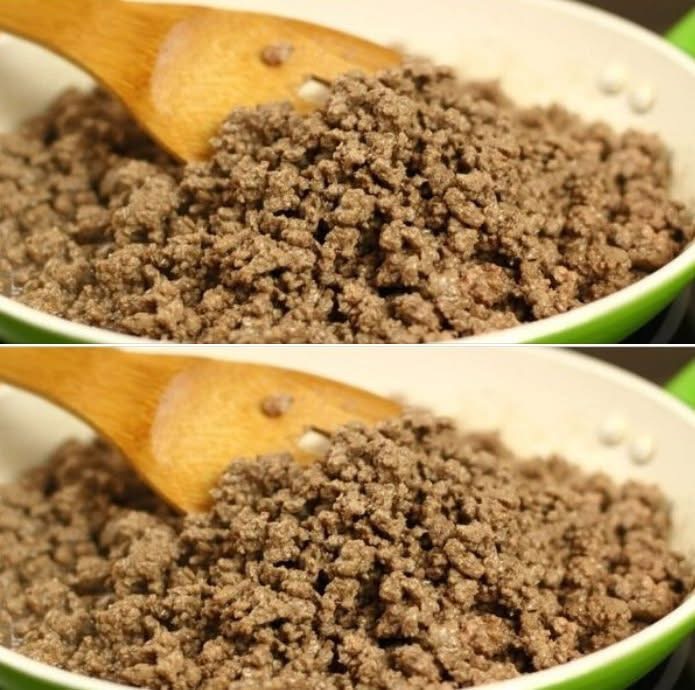Introduction
Sloppy Joes are a timeless American classic—juicy, saucy, and packed with flavor. This dish dates back to the early 20th century when a cook named Joe in Sioux City, Iowa, reportedly added tomato sauce to loose meat sandwiches, creating the first version of what we now call Sloppy Joes. Over the years, this meal has become a favorite among kids and adults alike, offering a sweet, tangy, and savory experience in every bite. Perfect for weeknight dinners or casual gatherings, Sloppy Joes are easy to make and incredibly satisfying.
Ingredients
For the meat mixture:
- 1 lb (450g) ground beef
- 1 small onion, finely chopped
- 1 small green bell pepper, finely chopped (optional)
- 2 cloves garlic, minced
- 1 tbsp olive oil
For the sauce:
- 1 cup ketchup
- 2 tbsp tomato paste
- 1 tbsp Worcestershire sauce
- 1 tbsp yellow mustard
- 1 tbsp brown sugar
- ½ cup beef broth (or water)
- 1 tsp salt
- ½ tsp black pepper
- ½ tsp smoked paprika (optional, for depth of flavor)
- ½ tsp red pepper flakes (optional, for heat)
For serving:
- 4 hamburger buns (toasted, for extra flavor)
- Butter (for toasting buns)
Instructions
Step 1: Cook the Ground Beef
- Heat a large skillet over medium heat and add olive oil.
- Add chopped onion and bell pepper (if using), and sauté until softened (about 3-4 minutes).
- Stir in minced garlic and cook for another 30 seconds until fragrant.
- Add ground beef and break it up with a wooden spoon. Cook until browned and no longer pink (about 5-7 minutes).
- Drain excess grease if necessary.
Step 2: Make the Sauce
- In a bowl, mix together ketchup, tomato paste, Worcestershire sauce, mustard, brown sugar, beef broth, salt, pepper, paprika, and red pepper flakes.
- Pour the sauce into the skillet with the cooked beef. Stir well to combine.
- Bring the mixture to a simmer and let it cook for 10-15 minutes, stirring occasionally, until it thickens.
Step 3: Toast the Buns & Serve
- While the beef simmers, toast the hamburger buns by spreading a little butter on them and placing them on a hot skillet for 1-2 minutes until golden.
- Spoon the Sloppy Joe mixture onto the bottom half of each bun, top with the other half, and serve hot!
History of Sloppy Joes
Sloppy Joes originated in the early 20th century when “loose meat” sandwiches became popular in diners across the Midwest. A cook named Joe is credited with adding tomato sauce, creating a new take on the sandwich that quickly spread across America. Over time, it became a staple in school cafeterias and home kitchens, loved for its messy, flavorful goodness.
Sloppy Joes are a classic American comfort food, but their exact origins are a bit messy—just like the sandwich itself!
Early Origins: The Loose Meat Sandwich
Before Sloppy Joes became popular, loose meat sandwiches were a common dish in the early 1900s, especially in the Midwest. These sandwiches were made with seasoned ground beef, served on a bun without a tomato-based sauce. They were simple, filling, and inexpensive, making them a go-to meal for working-class families.
Who Was Joe
The most famous theory credits a cook named Joe from Sioux City, Iowa, in the 1920s or 1930s. Joe worked at a café and decided to add tomato sauce to loose meat sandwiches, creating a saucier, more flavorful version. This new sandwich quickly gained popularity, and the name “Sloppy Joe” stuck!
Other Theories
While Joe from Iowa gets the most credit, other stories claim that:
- Sloppy Joes were inspired by a Havana, Cuba, restaurant called “Sloppy Joe’s Bar,” which was popular in the 1930s for serving messy, meat-filled sandwiches.
- Key West, Florida, had a Sloppy Joe’s Bar, made famous by writer Ernest Hemingway, which also served a similar sandwich.
